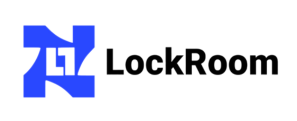
Virtual Data Room: The Best Solution to Simple your Financial Audit
Audits take up a lot of time, are difficult, and can be expensive. This is because many businesses still use old-fashioned methods for audits, like having auditors come to an office, covering their travel expenses, and giving them physical documents to review.
When done properly, using tools like a virtual data room, audits can give your organization credibility and boost confidence among customers, stakeholders, investors, lenders, and potential buyers.
However, if done poorly or without the right security measures, audits can pose a serious threat to any business. They may open the door to risks such as data breaches, failure to comply with regulations, and potential lawsuits from stakeholders, shareholders, or regulatory authorities.
By using data rooms for audits, companies can cut down on the costs and time spent on audits. Now, companies can get the expertise and information they need without the extra financial strain of traditional audit methods.
Traditional or Modern Financial Audits: What to choose ?
Some companies still stick to traditional auditing methods, keeping all their documents in physical form. They prefer having audit firms visit their premises, believing it provides better control and protection for important documentation. However, is this approach truly effective? In my view, not entirely. It not only incurs travel and delegation expenses for auditors but also tends to prolong the audit process.
More frequently, companies opt for sharing their documentation with auditors electronically, using methods like email or company FTP servers. This proves to be a more efficient solution, allowing auditors to work from their offices and speeding up the audit. Yet, the question arises: Is this the most secure way to share sensitive files? Do we adequately protect document content when sending them via email? Can we be certain that confidential data won’t end up in the wrong hands? There’s always a risk of human error, such as accidentally sending documents to unauthorized parties or losing control over documentation once it’s sent to auditors. Even company FTP servers don’t eliminate such risk.
What Is a Virtual Data Room (VDR) for Financial Audits?
A virtual data room for audits is an online solution that offers a highly secure space for storing, managing, and sharing documents with clients, partners, investors, and other stakeholders.
The software provides exceptional data protection and comes with user-friendly features. Users can easily set up permissions, track data room activity, automatically index folders and files, and simplify information searches. This makes the auditing process not only completely secure but also much more straightforward.
Currently, numerous companies worldwide have embraced virtual data rooms for various tasks, including audits, mergers and acquisitions, fundraising, real estate transactions, and more.
Top Benefits of Data Rooms for Financial Audits: Features that make audit successful
Ensuring a successful audit requires a secure, consistent, and transparent approach. Virtual data rooms for audits play a crucial role in achieving these goals, offering various benefits that go beyond eliminating stacks of paperwork. Let’s explore these advantages below.
Document Management in One Place
In audits, having all the needed financial information in one secure place is crucial. Without a secure virtual data room, there can be challenges, and incomplete or inaccurate data might lead to errors in the audit process. Virtual data rooms like Sharevault provide a central platform where all financial documents can be safely stored and organized. This platform can also be customized with your brand, keeping it visible throughout the process. Auditors and stakeholders can access these documents online from anywhere, reducing the need for physical handling and the risk of losing important information.
Enhanced Security Protocols
Security is a top priority in financial audits due to the sensitivity of the data. In 2023, the global average cost of a data breach was $4.45 million, with the financial sector being a major target. Virtual data rooms implement strong security features like data encryption, multi-factor authentication, and access controls. These measures ensure that only authorized individuals can view and interact with specific documents.
Collaboration in Real-time
Virtual data rooms support seamless collaboration between auditors, clients, and stakeholders involved in the audit process. Team members can simultaneously review and annotate documents, exchange comments, and communicate in real time. This speeds up the audit timeline and promotes efficient teamwork.
Audit Trail and Version Control
VDRs offer version control, allowing auditors to track changes made to documents over time. An audit trail records all activities within the data room, providing a detailed history of document access. This reinforces accountability and transparency. LockRoom VDRs also include a watermark feature to identify the source in case of a leak.
Simplify Review and Analysis
Virtual data rooms come with advanced search and filtering functionalities, making it easy for auditors to quickly locate specific information. This accelerates the review process, allowing auditors to focus on critical areas and identify potential anomalies more efficiently.
Channels of Secure Communication
VDRs often include secure messaging and Q&A features, enabling direct communication between auditors and the organization’s management or financial team while maintaining confidentiality. This streamlines the process of obtaining clarifications and additional information.
Worldwide Availability
Virtual data rooms make audits easier for organizations with international operations or stakeholders in different regions. Auditors from different locations can access the data room simultaneously, eliminating geographical barriers and enhancing overall audit efficiency.
Reporting and Compliance
VDRs are designed to comply with various data protection and privacy regulations. This ensures that the audit process aligns with legal requirements, safeguarding sensitive financial information and preventing potential legal complications.
How To Choose The Ideal Data Room For A Financial Audit: Qualities To Consider
Are you looking for the ideal data room for an audit? To assist you in selecting the ideal option, we have put together a list of essential qualities.
User Activity Tracking
With audits providing information on all file views, printing, and downloads, users can look into questionable conduct. They may also make better sense of user behavior and data usage with the help of this information.
24/7 Support
Users need to access 24/7/365 technical support for assistance throughout the complex audit process. Our data room service offers guidance whenever facing challenges in dealing with intricate records and data analysis.
GDPR Compliance
Security best practices, such as developing transparent and unambiguous policies for the processing, storage, and backup of personal data, building a safe infrastructure for data backups, and guaranteeing bank-grade data encryption, are all part of GDPR compliance.
Variety of Document Access Rights
Youmay set up specific access controls for every document and folder in an audit data room. You can, for example, establish an access policy that restricts external auditors to document viewing and grants internal auditors editing rights.
Fence View
Access to the central portion of the text is restricted by a secure fence view. It strengthens the file’s security by preventing users from accessing any of the content outside of the safe perimeter. Additionally, specialized spreadsheet viewers for safely handling Excel files may be provided by VDR providers.
Advanced Q&A
In addition to allowing you to export and import questions from Excel into the data room and vice versa, Advanced Q&A centralizes communication within the virtual data room, automatically allocates questions to the relevant specialists, and safeguards the material at the same level as the rest of the data.
Implementing A Virtual Data Room for Finacial Audit in Transaction
Step 1: Establish the Virtual Data Room
After selecting a VDR platform with tailored security features for your industry and deal, the first step is to set up the virtual data room. This involves creating due diligence folders, organizing them logically, adding relevant documents, implementing document policies, and inviting users with specific permissions based on their roles.
Step 2: Upload and Arrange Documents
Once the VDR is set up and due diligence folders are logically organized, proceed to upload pertinent documents. These may include financial statements, legal contracts, intellectual property details, operational reports, and more. Organize the documents into folders and categories for easy user navigation.
Step 3: Invite and Manage Users
Invite relevant stakeholders, such as potential investors or legal advisors, to access the VDR. Assign appropriate permissions to control user access and interactions. Regularly monitor user activity through the audit trail for compliance and security.
Step 4: Promote Collaboration
VDRs excel at fostering collaboration among deal participants. Make users aware that they can ask questions, leave comments, and engage in discussions directly within the platform. This interactive feature enhances the due diligence process by facilitating efficient communication.
Step 5: Monitor User Activity
Throughout the due diligence process, administrators can monitor document access and user interactions, often down to the page level. This deal intelligence helps identify areas of interest and potential concerns, enabling proactive resolution.
Step 6: Close the Data Room
Upon completion of an M&A transaction, virtual data rooms simplify the process of revoking user access and either destroying or permanently archiving information. When closing a virtual data room, consider the ongoing security and integrity of sensitive information used for due diligence.
- Notify authorized users of the impending deactivation, allowing them to complete pending actions or retrieve necessary data.
- Halt all ongoing activities, including document uploads, downloads, and user access, before shutdown.
- Conduct a thorough review of the data room to ensure proper document placement and configured access permissions.
- Create a backup of the VDR’s contents for future reference if needed.
- Execute the shutdown, confirming all access points are locked, and notify relevant parties of the closure. This careful approach ensures the confidentiality of sensitive information and the successful closure of the virtual data room.


